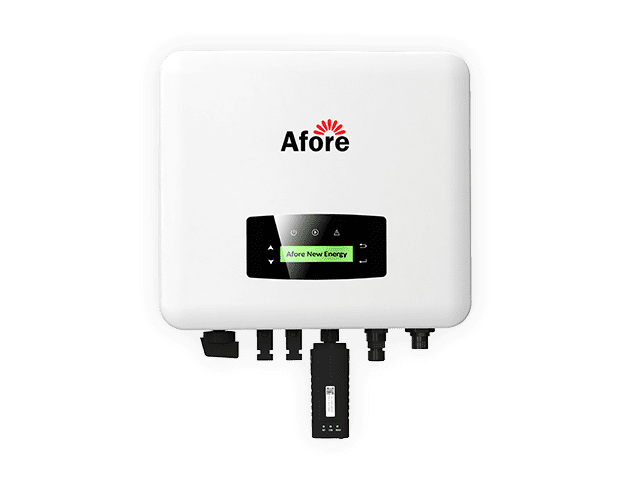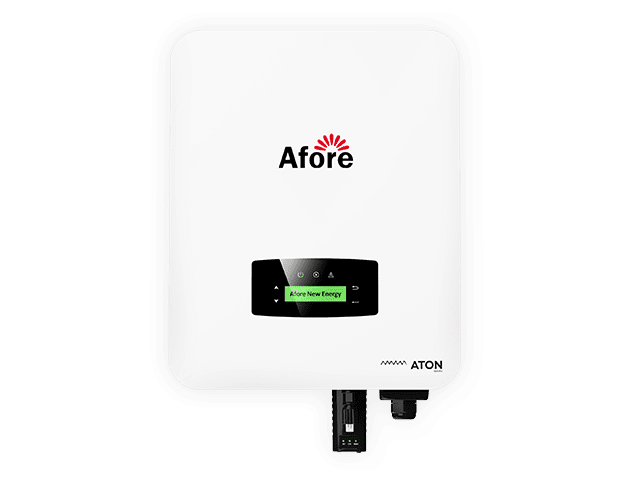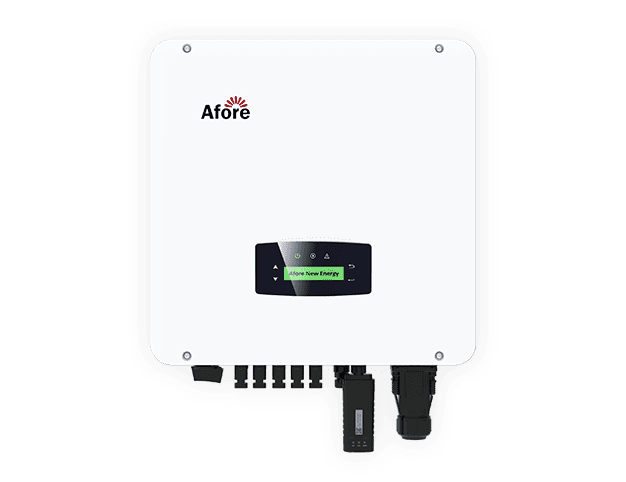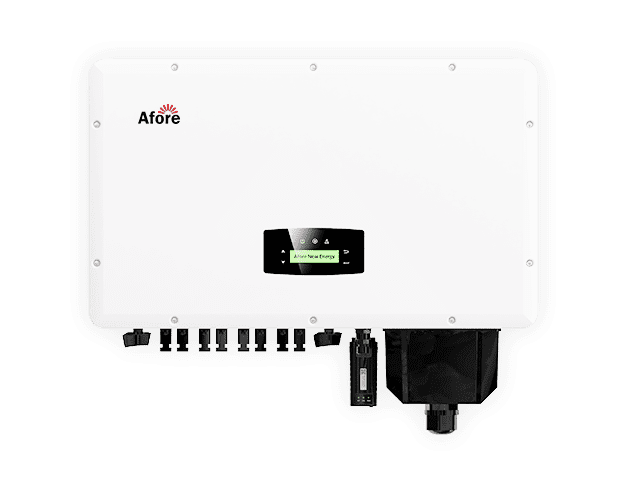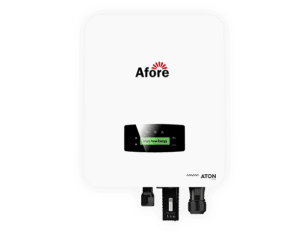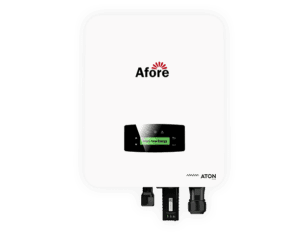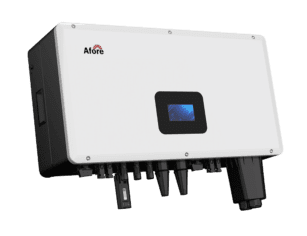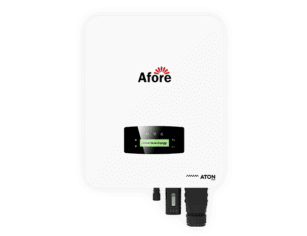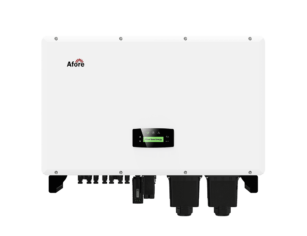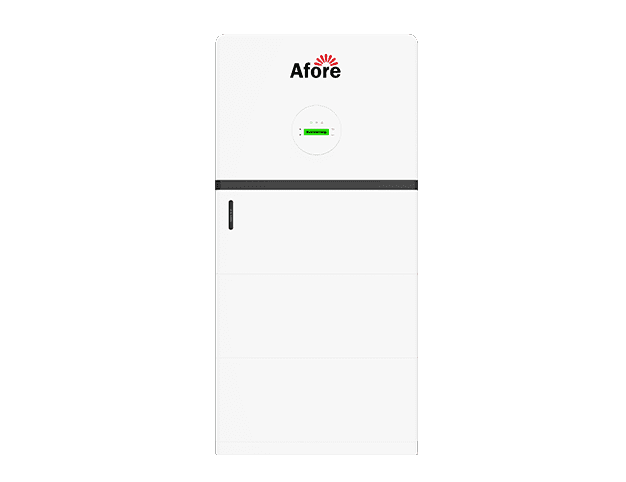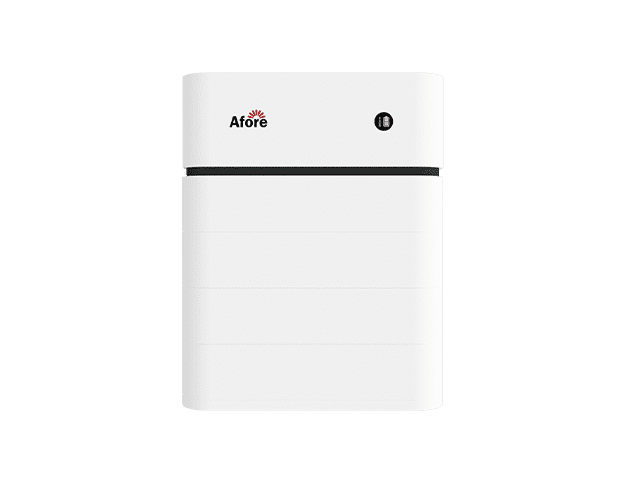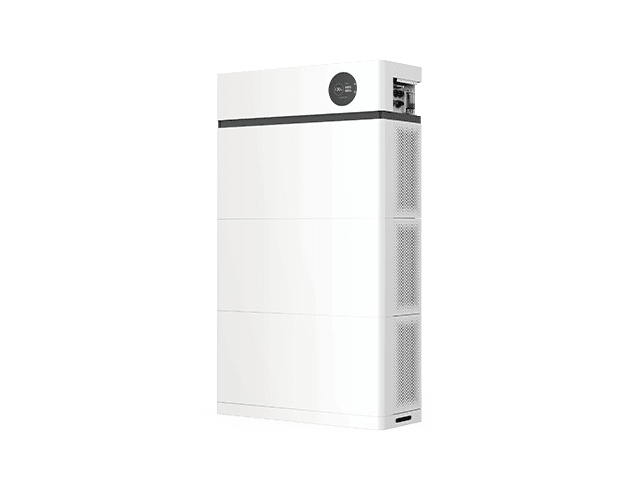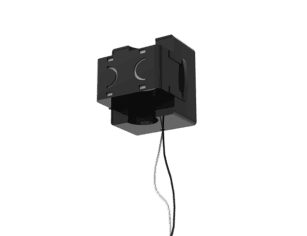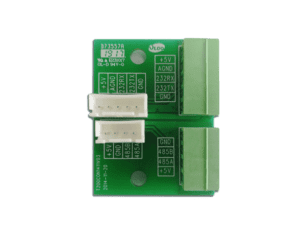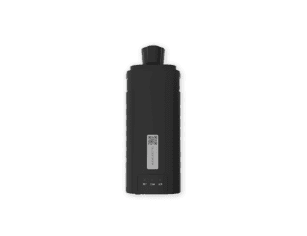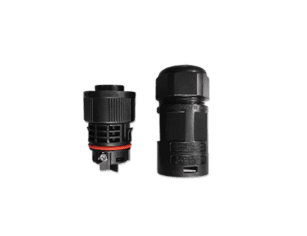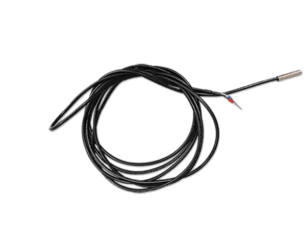Maximizing Savings with Commercial Energy Storage Solutions

Inhaltsübersicht
If you’ve ever thought about slashing your business energy bills or making your operations more sustainable, you’ve probably heard the term commercial energy storage. But what does it really mean, and why is it becoming such a hot topic among businesses today? Let’s dive in together, in plain English, to explore the world of energy storage for businesses, its benefits, practical applications, and how technologies like the solar inverter fit into the mix.
Understanding Commercial Energy Storage
What is Commercial Energy Storage?
At its core, commercial energy storage is about capturing electricity for later use. Think of it like a giant battery for your business—except it’s way smarter than the one in your phone. Instead of relying solely on electricity from the grid, companies can store power when it’s cheap or abundant (like during sunny afternoons if you have solar panels) and use it when prices spike or demand is high.
For businesses, this isn’t just about saving money; it’s about control, flexibility, and resilience. Imagine running a bakery during a sudden blackout and still keeping ovens warm or a factory that never stops production because energy is always available. That’s the power of commercial energy storage.
Why Businesses Are Investing in Energy Storage
Here’s a reality check: electricity bills are unpredictable. Rates fluctuate, outages happen, and peak hours can cost a fortune. This is where commercial energy storage shines. Businesses are investing in storage systems because it allows them to:
- Cut energy costs: Store cheap electricity and use it during expensive peak hours.
- Increase reliability: Avoid downtime from blackouts.
- Support sustainability goals: Pair storage with renewable energy like solar power.
Take, for example, a mid-sized office building. By installing commercial energy storage, it can charge during low-demand hours overnight and supply energy during peak daytime hours, reducing reliance on the grid—and yes, that can translate into thousands of dollars saved annually.
Key Components of Commercial Energy Storage Systems
A robust commercial energy storage system isn’t just a battery on the wall. There are several crucial components:
- Batteries: Lithium-ion is popular, but flow batteries and others are emerging.
- Energy management software: Keeps track of usage, charging, and discharging cycles.
- Solar inverters: If you have solar panels, a solar inverter converts DC electricity from panels to AC power usable by your system and synchronizes storage.
Together, these components create a seamless system that stores energy efficiently, adapts to your business needs, and integrates clean energy wherever possible.
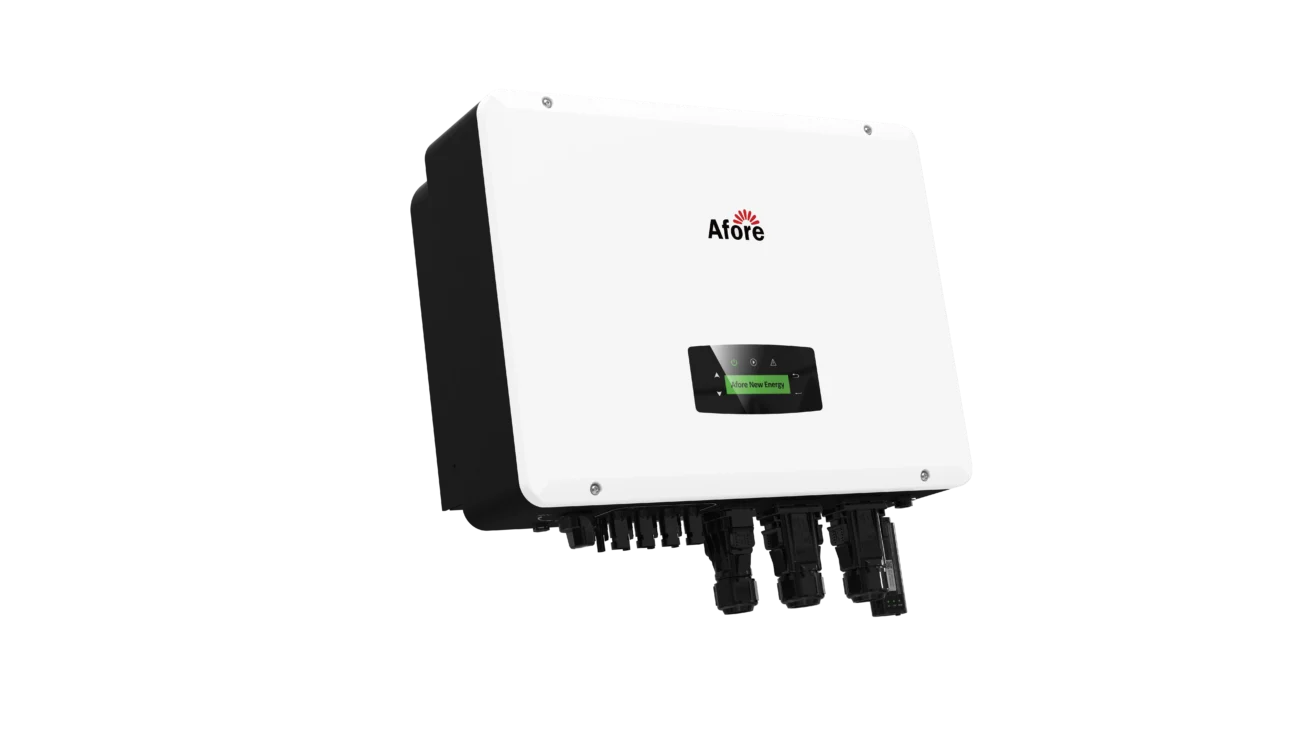
How Commercial Energy Storage Works
Understanding how commercial energy storage works can feel a bit technical at first, but let’s break it down in a way that makes sense for any business owner. Think of it as having a smart, invisible assistant that manages your electricity so you always have power when you need it most—without paying for extra energy unnecessarily.
At its core, a commercial energy storage system charges up when electricity is cheap or abundant and discharges when you need it the most. For example, during a sunny afternoon, a business with solar panels can store excess electricity in its batteries. Then, when the sun sets or peak energy rates kick in, that stored energy is used instead of drawing expensive electricity from the grid. This simple cycle of charging and discharging is the backbone of any efficient energy storage system.
Charging and Discharging Cycles Explained
Let’s get a bit more specific. Every commercial energy storage system has two key phases: charging and discharging.
- Charging – This is when your system is “filling up.” Electricity is stored in the battery either from the grid during off-peak hours or from renewable sources like solar. The goal is to capture energy when it’s cheap, abundant, or clean.
- Discharging – This is when the battery releases the stored energy to power your building. Discharging is carefully managed to match peak demand or emergency needs, ensuring your business always has reliable electricity.
Think of it like filling up a water tank in the morning so you have water during the busiest part of your day. The principle is simple, but the results can be transformative for both cost savings and operational reliability.
Role of Solar Inverters in Commercial Energy Storage
If your business integrates solar panels, the solar inverter plays a critical role in making your commercial energy storage system work efficiently. Solar panels produce DC (direct current) electricity, but most commercial buildings operate on AC (alternating current). Without a solar inverter, your stored solar energy would be incompatible with your building’s electrical system.
The inverter converts DC into AC electricity, directing it to your storage system or your business’s immediate energy needs. It also manages energy flow, ensuring that batteries charge efficiently and power is distributed properly. In essence, the solar inverter acts as a bridge between your renewable energy sources and your storage solution, making the entire system smarter and more cost-effective.
Efficiency and Energy Optimization Tips
Even the most advanced commercial energy storage system can underperform if not used strategically. Here are a few tips to get the most out of your investment:
- Monitor Usage Patterns: Understanding when your business consumes the most energy allows you to schedule storage and discharge efficiently.
- Charge During Off-Peak Hours: Electricity is usually cheaper during non-peak periods. Your system should take advantage of this to minimize costs.
- Integrate with Renewable Energy: Pairing batteries with solar panels and a reliable solar inverter ensures energy is clean and abundant when needed.
- Regular Maintenance: Batteries degrade over time. Keeping your system well-maintained prolongs life and ensures consistent performance.
By combining technology with smart management, businesses can significantly cut costs, reduce their carbon footprint, and protect against unexpected power outages. The key is to treat your commercial energy storage system not as a set-and-forget tool, but as a strategic asset that works actively for your business.
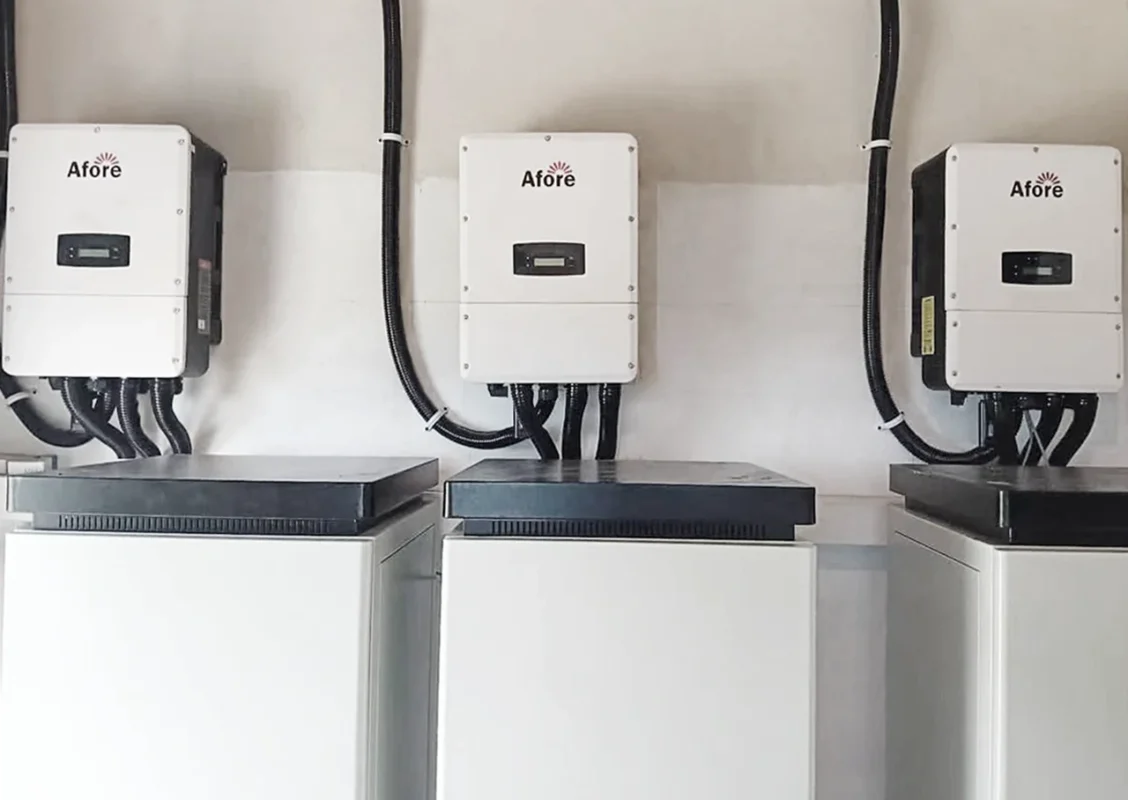
Choosing the Right Commercial Energy Storage System
Selecting the right commercial energy storage system for your business might feel overwhelming at first. With so many options—different battery types, capacities, and technologies—it’s easy to get lost. But the good news is, by breaking it down into a few key steps, you can make a choice that’s practical, cost-effective, and future-proof.
The goal is simple: match your energy needs to a storage system that maximizes efficiency, saves money, and integrates smoothly with your existing setup, including any solar inverter you may have. Let’s explore how to make that happen.
Assessing Your Business Energy Needs
Before considering which battery or system to buy, start by understanding your energy profile. Ask yourself:
- How much electricity does my business consume on average?
- When are my peak energy usage hours?
- Do I want to back up all systems or just critical operations?
For instance, a small office may only need a few kilowatt-hours (kWh) of storage to handle peak hours or emergency backup. In contrast, a manufacturing facility might require hundreds or even thousands of kWh to maintain production without interruptions.
Evaluating these needs helps determine the capacity of your commercial energy storage system and ensures you’re not overpaying for more storage than necessary—or worse, underestimating your needs and running into shortages.
Comparing Battery Types and Technologies
Not all batteries are created equal, and choosing the right type can make a huge difference in performance, lifespan, and cost. Here’s a practical breakdown:
- Lithium-ion Batteries: High energy density and longer lifespan make them ideal for businesses with limited space and higher energy demands. They tend to have higher upfront costs but deliver long-term savings.
- Lead-acid Batteries: These are more budget-friendly initially but tend to be heavier, occupy more space, and have shorter lifespans. Suitable for small-scale or short-term installations.
- Flow Batteries: Flexible and scalable, these batteries are perfect for large commercial applications where long-duration storage is required. They allow easy expansion without replacing the entire system.
By understanding the strengths and weaknesses of each type, you can align the battery choice with your business goals and budget, making your commercial energy storage system both effective and sustainable.
Integration with Solar Inverters
If your business uses solar panels, compatibility with a solar inverter is a must. Here’s why:
The solar inverter ensures that energy generated from your solar panels can flow efficiently into your storage system. It manages the conversion from DC (direct current) to AC (alternating current) and controls the charging of your batteries. A system that isn’t properly integrated can waste energy or reduce battery life.
When selecting a commercial energy storage system, check that your battery technology works seamlessly with your existing or planned solar inverter. Proper integration ensures smooth energy flow, maximizes savings, and helps your system respond dynamically to both your energy consumption patterns and grid fluctuations.
Practical Considerations for Installation
Once you’ve narrowed down the battery type and capacity, think about the practicalities of installation:
- Space: Batteries require safe, ventilated areas. Lithium-ion batteries take up less space than lead-acid alternatives.
- Safety: Ensure proper electrical and fire safety measures. Batteries store a lot of energy, and careful planning is essential.
- Scalability: Consider whether you might expand in the future. Systems that can grow with your business save money and hassle down the line.
By addressing these factors early, you can avoid common pitfalls and ensure your commercial energy storage system performs optimally from day one.
Balancing Cost and Long-Term Value
Choosing the cheapest option isn’t always the smartest move. Look at total cost of ownership, including installation, maintenance, efficiency, and lifespan. A slightly more expensive system today can save your business thousands over the next decade through reduced energy bills, lower maintenance costs, and better compatibility with renewables like solar.
Remember, the goal of a commercial energy storage system isn’t just short-term savings—it’s long-term reliability, flexibility, and energy independence.

Financial Benefits of Commercial Energy Storage
Reducing Electricity Bills
One of the biggest draws of commercial energy storage is cost savings. By storing energy when rates are low and using it during peak pricing, businesses can shave off a significant portion of their electricity bills.
For example, a grocery store might use stored energy during the late afternoon when air conditioning spikes costs. This strategy, known as peak shaving, is an everyday game-changer for businesses.
Government Incentives and Tax Benefits
Many governments offer general incentives for energy storage and renewable integration—think tax credits or rebates. While the specifics vary, commercial energy storage often qualifies, making your investment more attractive financially.
Even without citing programs, the takeaway is clear: incentives make energy storage not just practical but economically smart.
Long-Term ROI and Business Sustainability
Think long-term. Commercial energy storage pays off over time by:
- Lowering operational costs.
- Reducing dependence on fossil-fuel-based power.
- Future-proofing your business against rising energy costs.
It’s not just an expense; it’s a strategic investment in both financial and environmental resilience.
Tipps zur Installation und Wartung
Installing a commercial energy storage system isn’t just about putting a battery on the wall and calling it a day. Done right, installation and maintenance ensure your system performs efficiently, lasts longer, and delivers maximum savings. Done wrong, it can lead to inefficiency, costly downtime, or even safety issues. Let’s walk through practical tips for installing and maintaining your system, so you get the most out of your investment.
Planning the Installation Process
Proper planning is the first step toward a successful commercial energy storage system. Here are the key considerations:
- Space and Layout: Batteries need a safe, ventilated area. Lithium-ion batteries are compact, but larger lead-acid or flow batteries require more room. Think about future expansion as well; planning extra space now can save a headache later.
- Electrical Infrastructure: Your building’s electrical system must support the storage system. This includes wiring, circuit breakers, and grounding. Integration with your solar inverter should also be considered from the start to ensure energy flows smoothly.
- Safety Measures: Batteries store significant energy, so fire safety, temperature control, and proper ventilation are essential. Following safety guidelines isn’t optional—it protects both people and equipment.
A carefully planned installation sets the stage for reliability and efficiency. Take your time, map out your needs, and consider professional guidance if necessary—especially for larger commercial setups.
Routine Maintenance and Monitoring
Once your commercial energy storage system is installed, maintenance becomes the key to longevity and performance. Here’s what to focus on:
- Battery Health Checks: Batteries degrade over time, so regular inspections for signs of wear, capacity loss, or temperature irregularities are important.
- Software Updates: Energy management software controls charging and discharging cycles. Keeping it updated ensures your system is always running optimally.
- Inverter Performance: If your system uses a solar inverter, check that it’s functioning properly. An inefficient inverter can reduce the effectiveness of your storage system and waste energy.
- Cleaning and Environment: Dust, heat, or moisture can impact battery efficiency. Keep the storage area clean, ventilated, and at a stable temperature.
Maintaining your system doesn’t have to be complicated. Even simple, routine checks can prevent costly repairs and ensure your commercial energy storage continues to save your business money year after year.
Fehlersuche bei allgemeinen Problemen
Even the best commercial energy storage systems can encounter issues. Here are common problems and tips to handle them:
- Battery Not Holding Charge: Check connections, temperature, and software settings. In some cases, a partially degraded battery may need replacement.
- Unexpected Power Fluctuations: This can result from incorrect inverter settings or sudden changes in demand. Monitoring software can help identify patterns and adjust usage.
- Software Alerts or Faults: Treat all warnings seriously. Most modern systems provide diagnostic tools to pinpoint the problem without needing extensive technical expertise.
Being proactive with troubleshooting keeps your system reliable. Think of it as routine car maintenance—catching a small problem early saves time, money, and stress later.
Tips for Long-Term Performance
To ensure your commercial energy storage system remains an asset for years:
- Track energy usage patterns and adjust charging schedules to match.
- Avoid fully discharging batteries unless necessary—this can reduce lifespan.
- Regularly review your system’s performance reports to identify efficiency opportunities.
- Integrate updates or expansions gradually to maintain smooth operation.
A little attention goes a long way. By treating your commercial energy storage system as a critical business tool, you not only extend its life but also maximize cost savings and reliability.

Future of Commercial Energy Storage
Emerging Technologies
Next-generation batteries promise higher efficiency, faster charging, and longer lifespans. Innovations in commercial energy storage mean businesses can store more energy in smaller spaces with minimal environmental impact.
Trends in Solar Inverter Integration
New solar inverters are smarter, more efficient, and capable of handling larger storage capacities. Businesses integrating solar energy will benefit from these advancements, unlocking even greater efficiency and savings.
The Business Case for Staying Ahead
Early adopters of commercial energy storage gain a competitive edge. Beyond savings, it demonstrates sustainability, resilience, and forward-thinking leadership—a message that resonates with clients, employees, and stakeholders alike.
Schlussfolgerung
Investing in commercial energy storage is more than a trend—it’s a strategic business decision. From cost savings and sustainability to energy independence and reliability, the benefits are tangible and long-lasting. Paired with a reliable solar inverter, your business can harness clean energy more efficiently than ever, future-proof operations, and gain a competitive edge in an increasingly energy-conscious world.
FAQs
-
What is commercial energy storage and how does it work?
Commercial energy storage stores electricity for later use. It charges when energy is cheap or abundant—like overnight or during sunny afternoons—and discharges when demand is high or electricity rates spike. This helps businesses save on bills, maintain reliability, and make better use of renewable energy sources.
-
How much can businesses save with commercial energy storage?
Savings vary depending on your energy usage, peak demand periods, and system size. Many businesses see reduced electricity bills by storing low-cost energy and avoiding peak-hour rates. When paired with solar panels and a solar inverter, savings can be even greater.
-
What types of batteries are best for commercial energy storage?
There are several options:
• Lithium-ion: High efficiency, compact, long lifespan.
• Lead-acid: Budget-friendly but larger and less durable.
• Flow batteries: Scalable and ideal for large operations.
The right choice depends on your business size, energy needs, and budget. -
How does a solar inverter affect energy storage efficiency?
A solar inverter converts DC electricity from solar panels into AC electricity usable by your business. It also manages energy flow into your commercial energy storage system, ensuring efficient charging and reducing energy waste. Proper integration with your inverter maximizes both cost savings and system lifespan.
-
Is commercial energy storage suitable for small businesses?
Absolutely. Even small businesses can benefit from storing energy during off-peak hours, reducing electricity bills, and having backup power during outages. A scaled-down system can be surprisingly effective and cost-efficient.
-
What maintenance is required for commercial energy storage systems?
Routine maintenance includes:
• Checking battery health
• Updating energy management software
• Inspecting the solar inverter
• Ensuring proper ventilation and temperature control
Regular maintenance prolongs battery life and ensures consistent performance. -
How long does a typical commercial energy storage system last?
Battery lifespan varies by technology:
• Lithium-ion: Typically 10–15 years
• Lead-acid: Around 5–10 years
• Flow batteries: Can last 10–20 years with proper care
Proper maintenance and usage patterns play a key role in longevity. -
Can commercial energy storage help during power outages?
Yes. A properly sized commercial energy storage system provides backup power for critical operations, keeping essential equipment running until grid power is restored. This can prevent costly downtime for businesses.
-
Are there financial incentives for installing commercial energy storage?
Many regions offer general incentives for energy storage and renewable energy integration. These can include tax credits, rebates, or financing programs. While specific programs vary, commercial energy storage often qualifies, making installation more financially attractive.
-
How do I choose the right commercial energy storage system for my business?
Start by assessing your energy needs, peak consumption times, and budget. Compare battery types and capacities, ensure compatibility with your solar inverter, and consider long-term ROI. The right system balances cost, performance, and future scalability.





